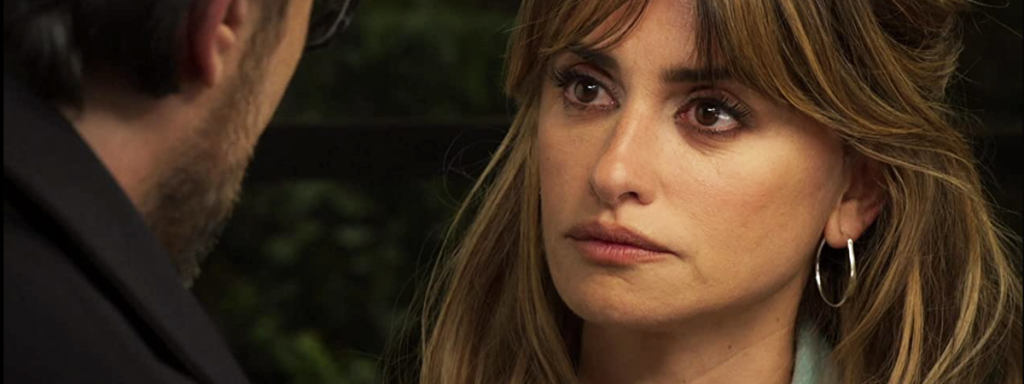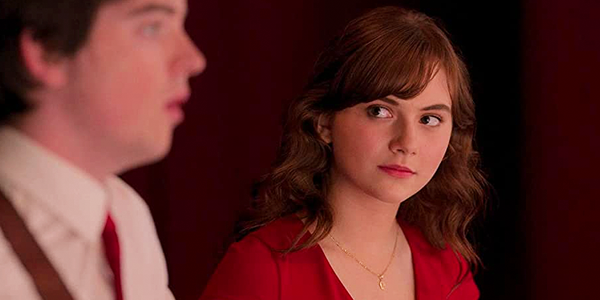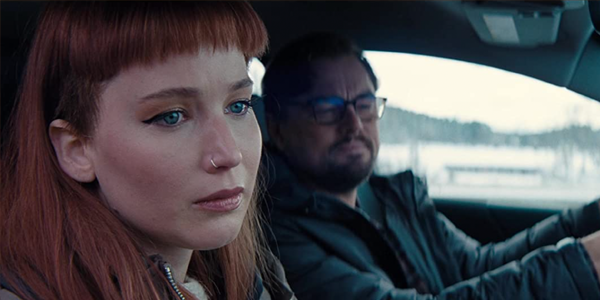recent reviews
Sign up for our monthly newsletter
to stay up to date on Cineluxe
Almodóvar’s latest is melodrama as art, done with the flair of New Wave-era Godard
by Dennis Burger
March 22, 2022
I was recently chatting with a dear friend about a particularly awful movie I’d just finished watching. In the course of the conversation, I likened it in ways to a Rubik’s Cube that had been “solved” by someone who simply pulled off the stickers and reaffixed them, with no real understanding of the fundamentals of a standard 3×3 cube layout (e.g., red is always opposite orange, blue opposite green, etc., and the center squares of each side never move relative to one another). I won’t call that movie out, since it hardly matters. I only bring it up because Pedro Almodóvar’s Parallel Mothers also reminds me in many ways of a distinctive solution to a Rubik’s Cube.
Rather than a ham-fisted, amateur attempt at lazy deception, this film brought to mind watching my favorite blindfolded cubers, who are forced to solve the puzzle in their heads before temporarily losing use of their eyes, and who rely on complicated mnemonic memory aids that I just barely understand. If they make a mistake somewhere in the middle of the solution, they usually don’t know until it’s too late. And if they do flub a turn and somehow catch themselves and course-correct, it’s almost more impressive than a perfect solve.
And in case it wasn’t obvious, I’m talking about Rubik’s Cubes because I don’t want to talk about Parallel Mothers on its own terms. There’s simply too much for one review to contain and far too many surprises I could spoil. But here’s the gist: The film follows two parallel storylines, both centered on Penélope Cruz’s character Janis. One follows her ongoing efforts to have a Spanish Civil War-era mass grave in her hometown excavated so her forebears and others can receive proper burials. The other involves two unplanned pregnancies and a hospital oversight that results in her newborn being swapped with another. And in weaving these stories together, Almodóvar manages to say something truly meaningful and resonant about generational differences, intergenerational trauma, and the idiosyncratic familial bonds that form between humans, related and unrelated alike.
That’s enough info to give you a sense that Parallel Mothers is ultimately melodrama. But it’s melodrama elevated to the level of art due to skillful and at times subtle scripting, meaningful character development, brilliant performances all the way around, and some cinematic techniques that occasionally reminded me of Godard’s best New Wave-period films. It’s a shame it’s not amongst this year’s Best Picture nominees since it belongs in the conversation alongside Dune and CODA as one of 2021’s better cinematic efforts.
As of this writing, Parallel Mothers is only available in the U.S. as a PVOD rental from most major digital retailers, and I point that out because I suspect the quality of its presentation might be affected by that. Even on Kaleidescape, the film is only available in SDR, although the resolution is UHD.
The former isn’t as impactful as you might suspect. Despite being shot digitally and recorded in Sony’s X-OCN (extended tonal range Original Camera Negative) format at 16 bits, and despite being an incredibly vibrant film with wonderful color design throughout, the image doesn’t seem to be constrained by its 8-bit presentation. I spotted a brief instance of what looked like white-clipping in one shot, but other than that, the delicious color palette and tonal scale seem to fit comfortably within the constricted gamut of SDR.
The cinematography is exceptional and detail is at times just lovely. But—and this is a big but—there are some issues with the presentation whose causes I can’t quite figure out. The image is pretty noisy, and I’m not sure if that noise was captured in the camera or involves some sort of film-look process including faux grain. What’s more, even on Kaleidescape, there are misplaced textures and glitches of the sort you might associate with extremely low streaming bitrates—far lower than those employed by better services like Disney+ and Apple TV+. But that hardly makes sense, given that this is a full-bandwidth download. So I strongly suspect the problems come from the files provided by Sony.
Mind you, these problems only really rear their heads at large cinematic proportions. Sitting 6.5 feet from my 75-inch display (~45.5 degrees field of view), I found the noise and the odd movement of textures distracting. When I moved back to around 7.5 feet, though (~40 degrees field of view, comparable to a 120-inch projection screen viewed from a distance of 12 feet), the image was consistently lovely, and the impact of the weird noise and apparent encoding issues all but disappeared. So if you’re viewing this in your home cinema and your preferred seat is in the first row, maybe move back to the second row.
Kaleidescape presents the film with its original Spanish mix, encoded in DTS-HD Master Audio 5.1, with forced English subtitles in yellow. For the most part, it’s an understandably front-focused mix, aside from the score music, which often dances out into the room. But the shape of the sound mix changes near the end, thanks to some artfully employed surround effects that pull you into the screen, seemingly placing you between the camera and its subjects. It’s a neat effect, and its judicious application makes it all the more effective.
Hopefully by the time Sony Pictures prepares the film for a proper North American home video release, the issues with the noise and funky textures will have been resolved, because this one is a keeper for me. It’s probably Almodóvar’s best film since 2006’s Volver, and it’s a damn sight better than most of this year’s Best Picture noms. Just know going in that if you rent the film during its PVOD window, you might find the somewhat flawed presentation of its lovely cinematography a little distracting—or maybe this is just what the film looks like. I honestly can’t know for sure.
Dennis Burger is an avid Star Wars scholar, Tolkien fanatic, and Corvette enthusiast who somehow also manages to find time for technological passions including high-end audio, home automation, and video gaming. He lives in the armpit of Alabama with his wife Bethany and their four-legged child Bruno, a 75-pound American Staffordshire Terrier who thinks he’s a Pomeranian.
PICTURE | The delicious color palette and tonal scale seem to fit comfortably within the constricted gamut of the rental’s UHD SDR presentation, but there are some issues with glitches, noise, and misplaced textures that seem to stem from Sony’s transfer files
SOUND | The 5.1 DTS-HD Master Audio mix is understandably front-focused, aside from the score music, which often dances out into the room
© 2023 Cineluxe LLC







